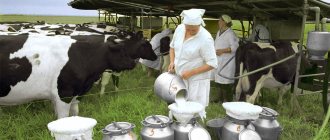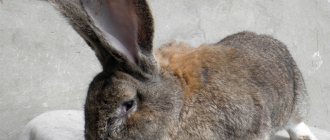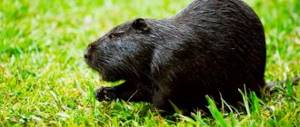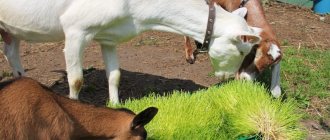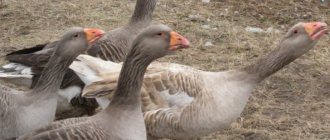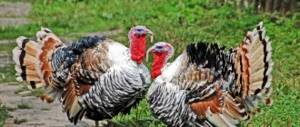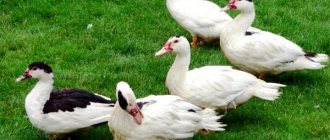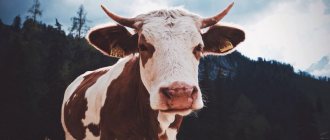Characteristics of animals
Nutria is a waterfowl similar in appearance to a giant rat. It is also called the swamp beaver. The body length of the coipu reaches 60 cm or more, not including the tail. The average weight of a rodent reaches 5-7 kg, although heavier animals can also be found.
Koipu is characterized by a strong build and a heavy skeleton. The animal has:
- massive head with small ears and eyes;
- blunt muzzle with long vibrissae on the front;
- orange incisors;
- massive dense body with short legs.
The rodent is characterized by a semi-aquatic lifestyle, which caused the body to acquire some distinctive features:
- The animal's nasal muscles have special muscles that close when the nutria is underwater.
- Animals can consume food directly in water, which is facilitated by the special structure of the lips. They are characterized by closure behind the incisors, due to which water does not penetrate into the oral cavity.
- The tail serves as a rudder when the rodent is underwater. This part of the body reaches 45 cm in length; instead of wool, it is covered with scales, due to which it has good streamlining.
- There are membranes on the hind legs that help the animal swim quickly.
- The animal's skin does not get wet in water. It consists of strong guard hairs with a thick soft undercoat. On the belly and sides the coat is lighter and thicker, which maintains the required temperature in this area of the body.
- In female coipu, the location of the mammary glands is high, offset to the sides from the center of the chest. Thanks to this position of the nipples, the cubs can feed even in water.
Important! Nutria do not have a pronounced molting period. The change of coat occurs in stages throughout the year. Hair almost completely stops falling out only in the winter months. It is during this period that animals can boast of the thickest and most beautiful fur.
Lifestyle Features
In nature, the marsh beaver prefers to live near bodies of water. You are most likely to encounter this animal in bodies of water with stagnant water or in those where the current is rather weak, as well as along the swampy banks of small rivers, in reed lakes and sedge swamps. It is in such hard-to-reach places that the animal is safe and provided with sufficient food. Animals avoid open areas and large bodies of water, but there are cases where nutria families lived along the banks of large deep rivers and even reservoirs. In its homeland, nutria also lives in mountain rivers at an altitude of up to 1200 meters, and on some islands it even lives in brackish lakes.
The marsh beaver is resistant to heat and cold down to -35 degrees, but is not adapted to survive in cold climates. Thick fur protects from frost, but the paws and tails of the animals are susceptible to frostbite.
Unlike the muskrat or beaver, nutria does not build winter burrows and huts, does not store food reserves in case of cold weather and winter, and also does not know how to navigate under ice.
Swamp beaver nests are most often located on high swamp hummocks and in dense coastal thickets of grass and reeds. If the reservoir has steep banks, animals are able to dig long and complex systems of burrows.
What is the difference between nutria and muskrat?
Nutria are often confused with a mammal from the same group - the muskrat. These animals have some similarities, although there are also differences.
Among the similar qualities, the following should be noted:
- they belong to the class of rodents;
- have a blunt muzzle;
- protruding incisors;
- waterproof wool;
- tail without fur;
- excellent hearing;
- swim beautifully;
- breed almost throughout the year;
- eat only plant foods;
- live in groups.
Let's look at the main differences:
- Koipu are larger in size compared to muskrats;
- male koipu are larger in size compared to females, which is not the case with muskrats;
- compared to nutria, muskrats store food for the winter;
- The life expectancy of koipu is 6-8 years, and that of muskrats is 3 years.
Although these animals are very similar in appearance, they still differ significantly from each other.
White nutria
This group includes Azerbaijani, Italian and Severinsky. Azerbaijani white nutrias are characterized by a pure white color, without yellowish or creamy shades. Sometimes black spots are visible on the neck or around the eyes. If you mate Azerbaijani nutria with standard breeds, already in the first generation they are equally likely to be born as white or standard individuals.
White nutria
White Italian nutria are distinguished by a creamy shade of hair. There are no dark spots. If you mate with standard breeds, the offspring in the first generation will be silver.
Severinsky white nutria were bred in the Krasnodar region. They are characterized by a pure white color, but animals with dirty gray shades of fur are often found.
Places where nutria live
In the natural environment, coipu are often found near bodies of water in the lands of South America. They live from near the border zone with Bolivia all the way to Tierra del Fuego. Over time, European fur farmers noticed the distinctive features of nutria fur, which became the reason for the import of the animals to many countries in Eurasia, the USA and even Africa. Since the African continent is too hot and there is not enough water, the swamp beaver has not taken root here.
In the natural environment, coipu can today be found in the following areas:
- Transcaucasia;
- Kyrgyzstan;
- Tajikistan;
- Russia;
- Brazil;
- United States of America;
- Canada;
- Chile;
- Bolivia.
Interestingly, in some countries, nutria are perceived as pests, so the local population takes measures to prevent their reproduction. On European territory, these rodents are mainly bred artificially, although, according to researchers, the animals have pronounced features of animals living in the wild.
Although the homeland of nutria is warm regions, in the course of adaptation the animals have learned to survive in low temperatures down to -35° and in hot weather up to +40°, and they do not create a warm shelter; they live both in lowlands and on hills.
Important! In severe frosts, the weakest point of a rodent is its tail. If this part of the body is frostbitten, the nutria may develop sepsis, which causes the death of the animal.
Where does nutria live, habitat
Initially, nutria were distributed in South America, in the south of the continent. Animals inhabited the coastal zones of rivers and lakes in Bolivia, Paraguay, Argentina, right up to the Strait of Magellan. Animals were brought to other continents by people. In some parts of Europe and North America where winters are not too harsh, nutria have become established. The hot climate of Africa was not suitable for the animals.
Nutria
Rodents were brought to the territory of the Soviet Union from Argentina and Europe. In some regions of the country, the acclimatization of animals was successful, for example, in Tajikistan and Kyrgyzstan. They also took root in Transcaucasia. However, the distribution area often narrows due to a sharp drop in temperatures in winter. Thus, in 1980, the nutria population disappeared in Scandinavia and the northern part of the United States.
Life cycle features
Young Koipu have excellent hearing and an innate ability to move both in water and on land. Some females can give birth to up to 20 babies at once. Although newborn puppies already have fur, they are capable of freezing in winter, since parents do not specifically prepare special shelters.
The weight of the cub reaches approximately 250 grams. Animals are characterized by slow growth; within a day, a baby can gain a maximum of 25 grams of live weight, although this feature is observed only in individuals under 24 months. In addition, at the age of 5-6 months, nutrias experience a slowdown in growth.
So, even if the animal’s diet is balanced, it will take about 2-2.5 years to obtain a full-fledged adult. Moreover, swamp beavers reach sexual maturity at 3-7 months of age. And upon reaching 3 years of age, reproductive activity declines.
Throughout a rodent's life, molting occurs several times. Regardless of the variety, nutria begins to molt for the first time 50 days after birth, and this process continues for about 4 months. Upon completion, a high-quality fur coat grows on the animal’s body, which includes long, coarse guard hair and dense undercoat.
Interestingly, in the abdominal area the fur is thicker than on the sides and back. In adult rodents, the fur changes in stages throughout the year. A slowdown in shedding is observed in the summer and winter months, and in the winter the animals have better coats.
The energy of nutria is determined by the ambient temperature. The optimal temperature for the animal is +15-20°. Increased activity does not affect the rodent's metabolism, which is explained by the fact that its heartbeat is 15-20 times slower. During the winter months, Coipu typically lead a sedentary lifestyle.
It is not possible to calculate the average lifespan of nutria living in the natural environment, but domestic specimens are kept until the moment when the animal reaches slaughter weight.
Nutria breeding
Puberty in animals occurs by the 4-5th month of life. But to get healthy offspring, it is better to postpone the first mating until the 7-8th month, when the animal has gained at least 4-5 kg of weight.
Pregnancy lasts about 130 days, after which fully developed puppies are born, capable of not only seeing, but also walking and swimming normally. During pregnancy, females should be protected as much as possible from any loud noises and other causes of concern, for example, dogs walking around the farm and frightening the nutria with their very appearance. If a pregnant female nutria gets scared often, this can cause a miscarriage. During birth, females should not be disturbed at all, that is, they do not even need to enter the cage to feed or change water.
Females with puppies should be kept separately from other animals in warm and clean cages. It must be remembered that in the first few days of life, babies are very vulnerable to hypothermia.
Couple of nutria
At birth, nutria weigh about 200 grams and gain their first kilogram in about two months. Two-month-old young animals are separated from their mother and distributed for fattening or for repair of breeding stock. Growth and weight gain in nutria lasts 1.5-2 years, and the total life expectancy usually does not exceed 6-7 years. However, growing nutria is advisable only up to 7-8 months, since at this age their growth slows down significantly. The queens are changed after 3-4 years of life. 7-8 month old males weigh on average about 5-6 kg. Pure meat yields about 2-3 kg. Females are on average 20% smaller.
Types of nutria
Koipu is the only representative of its genus. Some varieties are distinguished by fur color. Let's look at what nutria are like.
Black
The fur is thick black, short and very shiny. The animal itself is large in size, calm, and easy to tame. Compared to other breeds, it gains weight faster and is completely unpretentious in terms of food. For which it is especially valued by livestock breeders.
Pearl
The color of the coat resembles pearls. These rodents are somewhat of a hybrid, as they were created by crossing three breeds. Reproduction of the pearl breed is permissible only with animals of the opposite sex of the same species. A distinctive feature of the cubs is that many babies are born with pastel-colored fur. Representatives of this breed are distinguished by increased demands on their maintenance and diet; they need year-round bathing and warm ventilation in the cold months.
Golden
These nutrias have a beautiful golden skin that shimmers under the sun's rays. Many livestock breeders who breed animals for fur prefer this particular variety. A characteristic feature of this breed is its unusual pattern: along the back the fur is bright golden, and on the sides and belly the color becomes lighter and less pronounced. The belly is light pink and shimmers with gold.
Representatives of this species are very unpretentious in their maintenance. Rodents quickly gain weight. The only drawback is that during one pregnancy a female gives birth to a maximum of 3-4 puppies. But to get more babies, you can mate this breed with brown nutria. In such a situation, the litter will include golden and brown puppies. Moreover, there will be more of the first.
Lemon
The fur of rodents of this species is pale yellow, soft with a tint. This breed was created by crossing beige nutria with albino. But such animals are prone to infections, so they require increased attention.
Silver
The skin of this breed has a very beautiful shade; it can be very light or dark, even blue. The fur has a very luxurious appearance, making this breed very popular among breeders. Koipu are undemanding when it comes to food, are highly fertile, and quickly gain weight. With proper care they can grow up to 12 kg. When crossed with other breeds of nutria, the babies are born equally of one and the other variety.
Snowy
These animals have snow-white fur. This breed was developed by crossing golden and silver coipus. To obtain numerous offspring, representatives of this breed must be crossed with other varieties.
Brown
Representatives of this breed are distinguished by dark brown fur with a golden tint. Along the back the fur is darker than on the belly. The animals do not require special care. Easily amenable to crossing with other varieties. Babies are born 50:50.
Pastel
These rodents have soft brown, beautiful, iridescent fur. The breed was developed by crossing pearl coipus with black ones. At birth, the fur of all babies is dark, and with age it gradually acquires a pastel color.
White Azerbaijani
These are animals with snow-white fur, a large head and a massive neck, dark eyes, light pink limbs and a tail. During mating with representatives of their own breed, a maximum of 4-6 babies are born.
How to buy nutria
Ideally, purchase nutria from nurseries or farms.
The fur of colored animals is considered more valuable than standard ones, therefore, if you plan to breed rodents for the purpose of selling their skins, it is recommended to purchase adult male and female nutria of these breeds. When breeding for meat, it is better to take young animals (2–3 months) of any breed.
It is better to purchase nutria for your own farm in the spring. In this case, before the onset of winter, they will have time to gain marketable weight and acquire thick fur.
Advice! Experts advise beginning farmers to start by breeding standard breeds of nutria. Such animals do not require special care and get sick less than colored ones.
When choosing nutria, you should pay attention to:
- wool, which should be thick and shiny;
- condition of the incisors - in a healthy animal they are bright orange, without inclusions of a different color or visible mechanical damage.
Nutria do not require particularly careful care; even a novice farmer can cope with their breeding. With some effort, you can not only provide your family with delicious meat and fur, but also make money by selling them.
Diet of nutria in the natural environment
The diet of nutria living in natural conditions consists only of succulent plant foods. The basis of nutrition is most often the roots of woody plants growing in the coastal zone and the biomass of vegetation such as cattails and reeds. Shoots and leaves of young reeds, bagel, water lily, arrowhead and certain types of algae are used as additional food.
If there is a shortage of food in its habitat, the animal can include large leeches, mollusks and small fish in its diet. But such food is temporary for the coipu, just to survive. An adult animal eats no more than 1 kg of plant food per day. During the winter months, nutria feed on dry plants and tree roots.
Buying nutria, price
If you are going to breed nutria, take young animals no older than 2-3 months. At this age, the rodent weighs approximately 1.3-2.3 kg. By the way, experienced breeders know that in order to obtain large livestock it is not necessary to buy giants: you can simply select healthy guts, raising them in a warm and well-fed environment.
To get nutria you need to go to farms, private nurseries and livestock farms. The conditions in which rodents are kept and their appearance will tell you a lot. It is preferable to take animals raised in enclosures with access to water and fed on natural food. Don't forget to inspect the insides and check their documents.
The price for good grown nutria starts from 1.5 thousand rubles. You can get a very tiny one for 500. However, you will rarely see the price in advertisements, since sellers prefer to discuss it over the phone.
Opponents in nature
Since koipu are herbivores, in natural habitats they can often become prey for predators, namely:
- poisonous reptiles;
- alligators;
- wolves;
- jaguars;
- cougars;
- carnivorous birds.
Since nutria feel vulnerable on land, they try to stay close to water. When it is not possible to escape by running away from the enemy, the animal prefers to go on the attack, using its sharp front teeth as a weapon.
How to keep nutria at home?
When kept at home, Coipus quickly become attached to a person and perceive the owner as a member of the family. Domesticated animals are kind and friendly creatures, which is why today many people keep them both for commercial purposes and as a pet.
To keep such pets you will have to acquire a special cage or enclosure. It is a fairly spacious structure, where there must be a reservoir filled with water. The cage should be located away from the source of noise, as this can injure the pet.
Some owners keep rodents in the basement in multi-tiered cages, using artificial lighting. In this case, it is better to keep the koipu for meat, since the lack of a container with water for swimming leads to a deterioration in the characteristics of the fur.
It is also necessary to ensure that your pet’s diet is balanced. When selecting food, you need to take into account the age of the animal and its physiological characteristics, since the size of the daily portion depends on this.
Animals need to be fed 2 times a day. In summer, food should consist of the following products:
- fresh grass or hay (alfalfa, clover) – 200-300 grams;
- rye or barley grain – 130 grams;
- poppy seed – 10 grams;
- fishmeal and table salt - 5 grams each.
In winter, in addition to the listed products, the rodent's diet should contain root vegetables: potatoes and carrots in a daily volume of a maximum of 200 grams. With the onset of spring, nutria's nutrition can be supplemented with birch and oak branches, grape shoots, young corn sprouts and weeds.
As for drinking, clean water should always be present in the drinking bowl. It is strictly prohibited to impose restrictions on drinking on females and young individuals during pregnancy and feeding of cubs.
In addition, in winter, domestic nutria require a certain temperature. In order for animals to feel comfortable, they should be moved to a heated room during the winter. Moreover, the temperature must be maintained within +8-19°.
Domesticated coipus should be kept in families, with 10-15 animals in one enclosure. Although some individuals have a bad temperament, they can behave aggressively both towards other brothers and towards their owners. As a result, it is better to keep such rodents in a separate cage and treat them with extreme caution.
Homemade nutria
Oddly enough, keeping nutria in an apartment as a pet is quite possible. They, of course, are not as popular as chinchillas or ferrets, but there are also lovers of these animals. Nutria are quite suitable for the role of pets, since they have a kind and affectionate disposition, and also easily get used to a person, considering him a member of their pack (nutria are pack animals).
Raised in a family from infancy, domestic nutria behaves in much the same way as a cat or dog - it cuddles, plays, and loves to sit in your arms. Males are more good-natured and trusting, but females can be a little aggressive when growing up. Otherwise, the animals are very interesting. They are very tame and willingly allow themselves to be squeezed and stroked. They tolerate being dragged by the tail much more calmly than cats and dogs, but there are still naturally nervous individuals. Like cats and ferrets, they like to climb onto the bed and make nests under the covers.
As numerous Internet videos testify, nutria are excellent beggars: after swallowing a treat, they immediately stretch their paws towards you, demanding that the banquet be continued. It can be very difficult to refuse such a request.
A well-bred animal with wooden blocks in its cage does not harm the furniture at all. However, even at home, nutria needs its own house - a spacious metal cage of at least 80x60x50. It should have a sleeping place, a feeding trough, and toys. The tray or tray should be placed directly under the cage.
In an apartment, feeding nutria is not a particular problem. They can be given granulated feed from a pet store. Also, the diet must include fruits and vegetables. Animals love bread crumbs, but fresh bread should not be given.
Nutria are prone to obesity, which is bad for their health. For this reason, human delicacies - cookies, buns, and other confectionery products - should be excluded from the diet.
Since in nature the animal lives near water, keeping nutria at home should take this fact into account. The pet needs to be provided with regular water treatments. The animal should be bathed daily. So that the animal can dive to its fullest, it is better to pour a full bath of cold (not warm) water.
The advantages of keeping nutria at home include:
- Good health. According to reviews, nutria only gets sick when it is not fed properly, or when the tail gets frostbite.
- Cleanliness. Animals eat by bringing food to their mouths with the help of their paws, and not by dipping their entire face into porridge, as cats and dogs do.
- They love order. Nutria do not store food in their cage and even like to neatly put their bowls in a pile.
- Cheap food. What to feed nutria? Easily available plant foods.
- Good disposition. In general, nutria are kinder and more tolerant than most cats and dogs, among which there are often individuals with a bad disposition.
Characteristics of meat products
In terms of taste, nutria meat is very similar to pork, but it is a “lighter” and healthier product. The energy value of a 100-gram serving of meat is 149 kcal. In addition, this amount of product contains 23.92 g of proteins, 4.72 g of fat, 1.01 g of carbohydrates, 70.82 g of water, 0.98 g of ash. In addition, koipu meat is rich in vitamins and microelements.
It is believed that the use of such an easily digestible product contributes to:
- strengthening the immune system (it is recommended by nutritionists for people after significant physical activity or a long illness);
- saturating the body with protein, vitamins and minerals against the background of obesity (favors weight loss);
- increasing tone (eliminates lethargy and insomnia);
- stimulation of the synthesis of thyroid hormonal substances (prescribed to persons with impaired thyroid function);
- activation of metabolism;
- improving the chemical composition of the blood (against the background of anemia).
It is worth noting that these products are strictly prohibited for use by persons who have been identified as having personal intolerance. In other situations, meat must be thoroughly cooked before consumption, since Trichinella multiplies quickly in it.
What is the value of nutria skins?
Many buyers perceive koipu fur as a second-class raw material. But, according to experts, nutria fur coats are products with an affordable price, characterized by excellent quality and durability.
Among the benefits of nutria fur are the following:
- the wool is thicker when compared with sheepskin;
- protect from the cold no worse than Tuscan fur;
- thanks to the shine of the fur, the finished products are no worse than a raccoon or fox fur coat;
- the weight of the fur is comparable to astrakhan fur and beaver;
- In terms of strength and density, nutria skin can be compared to mink or Tuscany;
- The fur is resistant to moisture, which is characteristic only of koipu skins.
Modern fashion designers often use sheared nutria fur, which is almost indistinguishable from expensive fur. Processing of skins involves leveling the skin and spine lengthwise. The appearance of such a fur product will be presentable for 5 years.
It is worth noting that some scammers pass off plucked nutria fur (in which the guard hairs have been removed) as beaver or mink fur. Products of this type of fur cost much more, so when purchasing, you should take a close look at the fur coat.
The healing effects of nutria fat
Coipu fat is an easily digestible, easily melting product, and it cannot harm the human body. Moreover, it is recommended to introduce it into the diet of people diagnosed with hypertension.
In addition, this product is recommended for use as an adjuvant for the treatment of:
- colds - to cope with a runny nose, you need to treat the nasal cavities with fat for 2 days;
- bronchitis and pneumonia - this helps to activate blood circulation and thin the mucus (to do this, rub the product into the sternum and interscapular area, then wrap yourself in something warm);
- inflammatory processes in the larynx - as a warming compress;
- wounds that cannot be treated, cracked heels - used externally.
Diseases and preventive measures
These animals are characterized by well-developed immunity and excellent health. Animals have a slight tendency to develop infections and parasitic pathologies, which sets them apart from other animals raised for fur.
But incorrect content and outbreaks of epidemics sometimes lead to the following pathologies:
- Salmonellosis. The pathogen is able to enter the animal’s body from a dirty container for food or drink. In addition, an animal can become infected from rats, flies, sparrows and people. Young individuals are more susceptible to the disease. To stop the spread of infection, infected rodents are eliminated (by killing and burning), followed by disinfection of the enclosure and equipment. For other family members, a course of treatment with Levomycetin, Biotin or Furazolidone is carried out. To prevent the development of this pathology, it is necessary to carry out comprehensive immunization every year.
- Pasteurellosis. Nutria can become infected with this disease through food and drink, from other rodents, birds and livestock. The disease can quickly lead to the death of the animal, so it is important to start treatment at an early stage. In this case, the veterinarian may prescribe therapy with Bicillin-3, Streptomycin or Penicillin. For prevention purposes, mandatory vaccination must be carried out.
- Tuberculosis. This disease is often asymptomatic. Nutria can become infected from sick relatives or by consuming infected cow's milk. You can begin to suspect the development of this pathology when the animal develops shortness of breath, coughing, apathy, or immobility. It is not possible to cure the animal; most often the coipu dies a couple of months after infection. So it is important to ensure that your pets have a balanced diet and properly care for them.
These are the most common and terrible diseases for domesticated nutria. If sanitary standards are not observed when keeping animals, health problems such as helminthiasis, food intoxication, and ringworm may develop. Having discovered the first signs of these ailments, you should immediately seek the help of a veterinarian.
Nutria is a very interesting animal. For commercial purposes, their maintenance is simpler compared to minks and beavers. The animals are capable of obtaining their own food without permission; they hardly emit a specific aroma, and it is not very difficult to care for them.
What to feed nutria
We remind you that nutria are able to feed on readily available plant food. But for greater savings, it is recommended, if possible, to open a farm and start breeding nutria close to a natural reservoir. Then some of the purchased feed and fruits/vegetables can be replaced with reeds and cattails.
In general, a normal diet of an adult nutria in the summer should include about a kilogram of herbaceous plants (regular clover and alfalfa. Alfalfa is one of the legumes intended for production and diversity..., or the same reed), 100-150 grams of mixed feed or food concentrates based on grain crops, a little salt, chalk and fishmeal. In winter, hay is used instead of fresh grass. Instead of green food or hay, animals should be given vegetables and fruits periodically. However, it is important that they are not rotten. Algae are very useful for nutria, which can replace 10-20% of the daily portion of green food. In addition, like their wild relatives, nutria, when bred and kept at home, willingly gnaw tree branches.
Although nutria eat all of the above, when given a choice, they begin to be capricious and choose the most delicious, ignoring the rest. To prevent animals from trampling grass and hay, it is better to immediately mix the entire daily amount of food into a homogeneous mass.
Nutria should be fed twice a day, preferably at one specific time. At the same time, about 40% of the daily food intake is given in the morning, and the remaining 60% in the evening. This is due to the fact that the natural biorhythms of nutria are tuned to a nocturnal lifestyle, regardless of what conditions for breeding nutria you have created on your farm.
